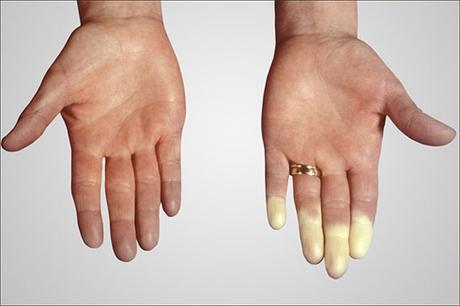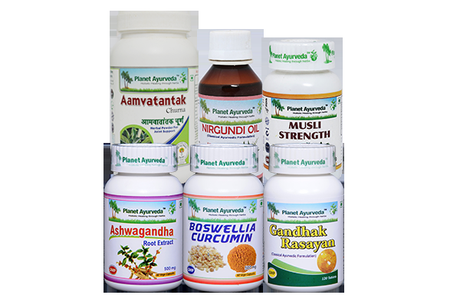Abstract
It is a rare autoimmune disorder in which patients suffer from overlapping symptoms of scleroderma, polymyositis and dermatomyositis. Autoimmune disease is a disease in which the immune system attacks the body, the immune system guards against bacteria and viruses and fights against cells to attack them. There are more than 80 types of autoimmune diseases which affect almost every part of the body. It tends to run in families, certain virus, chemicals trigger the autoimmune disease. Women are more affected by autoimmune disease than men. Main symptoms of autoimmune can come and go such as redness, swelling, heat and inflammation, fatigue, pain, numbness. There are many autoimmune diseases such as Psoriatic arthritis, sjogren's syndrome, rheumatoid arthritis, ulcerative colitis, dermatomyositis, psoriasis, myasthenia gravis, vasculitis. Some autoimmune targets only one organ such as in type1 diabetes which damages pancreas but some autoimmune targets the whole body such as in Lupus or systemic lupus erythematosus.
INTRODUCTION
Polymyositis is usually associated with connective tissues diseases, is an uncommon inflammatory disease that causes weakness affecting both sides of the body, can occur in any age group such as in 30s 40s. It inflames the muscles and their related tissues, causing muscle weakness and pain. Systemic sclerosis is systemic autoimmune disease caused by vascular lesions and fibrosis of multiple organs predominantly in skin, lungs, and heart. Scleroderma is hard skin due to overproduction of collagen, and myositis is chronic, affecting connective tissue that supports organs and other parts of the body. Autoantibodies found in patients are anti exosome antibodies. This condition affects the muscles of the body, which makes simple movements difficult. Polymyositis is a group of diseases called inflammatory myopathies.

FACTS
- Scleroderma is different from person to person
- Is not visible to the naked eye
- Mostly attacks women between 30-50 years old.
- 90% of patients who are suffering from scleroderma will also have raynaud's disease.
- Many scleroderma patients suffer from esophagus problems including GERD, heartburn.
CAUSES
The exact cause of polymyositis is not known but it usually happens in people between the ages of 31 to 60 years. It is an autoimmune reaction in which the body attacks its own tissues.
SYMPTOMS
- Muscle weakness
- Inflammation in the muscles
- Hard to swallow food
- Fever
- Weight loss
- Raynaud's phenomenon
- Fatigue
- Joints pain
RISK FACTORS
- Lupus
- Sjogren's syndrome
- Rheumatoid arthritis
COMPLICATION
- Difficulty swallowing- It may cause weight loss and malnutrition
- Aspiration pneumonia- difficulty in swallowing causes you to breathe food, saliva into your lungs which further leads to aspiration.
- Breathing problems- when chest muscles are affected there is shortness of breath, respiratory failure.
- Raynaud's phenomenon
- Cardiovascular disease- When this affects the muscular walls of the heart become inflamed and develop arrhythmias.
- Lung disease- there is scarring of the tissues which makes lungs stiff and inelastic.
- Cancer- is at higher risk.
- Trouble swallowing
DIAGNOSIS
- Blood tests
- EMG (electromyography)
- MRI (magnetic resonance imaging)
- Muscle biopsy
TREATMENT
- Corticosteroids- Drugs such as prednisone helps in controlling polymyositis symptoms.
- Corticosteroids sparing agents
- Rituximab
VARIOUS THERAPIES
- Physical Therapy- exercise to maintain and improve strength, flexibility to a certain level.
- Speech Therapy- As swallowing muscles are weakened so speech therapy is helpful.
- Dietetic assessment- eat nutritious food
AYURVEDIC MANAGEMENT
In ayurveda scleroderma is correlated with "Uttana Vatarakta ". When a person takes excessive food that aggravates vata doshas and on consumption of lavana, amla padarth rakta will quickly block the passages of vayu and thus interfere with the smooth movements, the vata are blocked by rakta and further contaminate the blood. The contaminated blood by vayu will leave its place and move towards the foot , this vata and rakta causes vatarakta. This is painful or dangerous amalgamation. Firstly it moves to the small joints of the foot and then spreads to the upper portions causing itching, numbness. There is a painful picture which involves kapha dosha that spreads to the whole body.
TYPES OF VATARAKTA
- Vata Pradhan Vatarakta- It causes pain, twitching, dryness, blackness and stiffness of the body parts.
- Pitta Pradhan Vatarakta- It causes burning sensation, tenderness, pain, swelling and suppration
- Rakta Pradhan Vatarakta- copper color of the skin, itching and moistness predominate.
- Kapha Pradhan Vatarakta- It causes numbness, heaviness, coldness and unctuousness.
On the basis of location
- Uttana Vatarakta- It usually affects the superficial tissues such as skin and muscles.
- Gambhira Vatarakta- This involves the blood and its deeper tissues like joints and bones and their internal viscera.
CAUSES
- Excessive consumption of salty food
- Moist food in excess
- Sugarcane
- Regular habits of sleeping during day
- Wrong choice of food
- Erratic lifestyle
- Excessive intake of dry meat
- Black gram
- Excessive consumption of green leafy vegetables
- Regular habit of awakening during night time
- Horse gram
SAMANYA CHIKITSA
- Basti -
- Asthapan basti with medicated decoctions
- Anuvasna basti with medicated ghee
- Ksheera basti with milk
- Raktamokshana - This is a blood letting method used in vatarakta condition.
VISHISHTH CHIKITSA
- Treatment for uttana vatarakta-
- Lepa
- Abhyanga
- Parisheka - sprinkling of medicated liquids
- Avagahana
- Upanaha
Treatment for gambhira vatarakta
- Snehapana- internal consumption of medicated ghee
- Virechana- therapeutic purgation
- Asthapana basti- enemas
- Anuvasana basti- medicated oil
- Ksheera basti- with herbal milk
Vataja vatarakta chikitsa
- Snehana- external or internal oleation with ghee or oil
- Swedana- sudation
- Virechana- purgation
- Asthapana basti- enemas with decoction
- Anuvasna basti - enemas with medicated oil
Raktaja vatarakta chikitsa
- Raktamokshana by various methods such as jaluka, alabu, prachchana.
- Virechana
- Asthapana basti
- Anuvasana basti
- Ksheera basti
- Pittaja vatarakta chikitsa-
- Virechana
- Raktamokshana
- Asthapana basti
- Ksheer basti
Kaphja vatarakta chikitsa
HERBS FOR SCLERODERMA- POLYMYOSITIS OVERLAP SYNDROME
1. Gokshura
Gokshura ( Tribulus terrestris) is an ancient herb used for body building and relieves disease of uro genital system, it helps to improve muscle strength and body composition. Gokshura has diuretic properties so it helps in cleansing effect, lithotriptic activity. It increases libido in both men and females which further promotes sperm production and ovulation, useful in anti obesity treatment, wound healing property.
2. Ashwagandha
Ashwagandha ( Withania somnifera) is very useful in the treatment of anxiety, sexual stimulant, leucoderma. Ashwagandha helps to improve brain and mental health. It acts as a rejuvenator and promotes vigour. It helps to improve blood circulation so it is used as a good antioxidant. As this herb improves muscle strength so it has nutritive value so helpful in gaining weight. Helpful in high BP and relieve stress.
3. Haridra
Haridra ( Curcuma longa) removes the blocked channels which is due to accumulation in the blood vessels. As haidra has channel cleansing property, further it detoxifies the rasa and enables free circulations thus restoring normal body functions. It further cures diabetes for ages, and is used in a wide variety of skin diseases which helps in skin complexions.
4. Vasa
Vasa ( Adhatoda vasica) is a bitter taste group of herbs. It has tikta (bitter), kashaya (astringent) taste, and balances kapha pitta dosha. Vasa is useful in chronic respiratory infection, burning urination. In bleeding disorders vasa is one of the best herbs which is to relieve inflammation, pain. It usually pacifies kapha and pitta doshas as it reduces urea level and other nitrogenous wastes from the blood.
HERBAL REMEDIES BY PLANET AYURVEDA FOR SCLERODERMA- POLYMYOSITIS OVERLAP SYNDROME
Planet ayurveda is a GMP certified company which formulates their own herbal supplements for managing all the health concerns. These formulations are free from any kind of preservatives, colors, resins and any kind of synthetic material. These supplements are free from any kind of side effects, and are totally safe, made from plant extracts and are 100% pure. For this purpose Planet Ayurveda provides a list of herbal remedies which are going to discuss further in detail how each remedy helps in this disease.
PRODUCTS LIST
- ASHWAGANDHA CAPSULES
- MUSLI STRENGTH
- BOSWELLIA CURCUMIN
- GANDHAK RASAYAN
- AAMVATANTAK CHURNA
- NIRGUNDI OIL


PRODUCTS DESCRIPTION
1. Ashwagandha Capsules
Ashwagandha are single herbal capsules formulated by planet Ayurveda using standardized extract of Ashwagandha ( Withania somnifera). These capsules are useful in conditions of neuropathy due to diabetes, relieve the muscle and calm down the system, so helpful in enhancing mental stamina. It is helpful in erectile dysfunction, premature ejaculations.
Dosage - 1 capsule twice daily with plain water after meals.
2. Musli Strength
Musli Strength are polyherbal capsules formulated by planet ayurveda using ingredients such as Safed Musli ( Chlorophytum borivilianum), Gokshura ( Tribulus terrestris). This capsule is helpful in strengthening of bones and body, which uplifts the reproductive system and increases the quality and quantity of sperms. This capsule has gokshura which is very beneficial in cardiac disease, piles and is pacifying vata and pitta doshas in the body.
Dosage- 1 capsule twice daily
3. Boswellia Curcumin
Boswellia curcumin are polyherbal capsules formulated by planet ayurveda using ingredients such as Shallaki ( Boswellia serrata) and Curcumin ( Curcuma longa). These capsules are used in the treatment of joint disorders and in muscle weakness. Shallaki present in this capsule is used as a painkiller which pacifies the vata doshas and is good in maintaining the osteophytes functions. Curcumin removes whole toxins from the body so it improves the good blood functioning and improves the flexibility of joints.
Dosage - 1 capsule twice daily with plain water after meals.
4. Gandhak Rasayan
Gandhak rasayan are herbal tablets formulated by planet ayurveda using Shuddha Gandhak ( Sulphur). These tablets are balancing tridoshas, and have anti bacterial, antimicrobial properties. It is helpful in many skin conditions such as it reduces itching, scabies, in eczema and is a natural blood purifying activity to reduce the acne and improves skin complexion. Gandhak Rasayan helps to fight against infections and enhances the immunity, strengthens the digestive power and improves absorption.
Dosage - 2 tablets twice daily with lukewarm water.
5. Aamvatantak Churna
Aamvatantak churna is herbal powder blends which is formulate by planet ayurveda using ingredients such as Sonth ( Zingiber officinale),Methi ( Trigonella foenum graecum), Gorakhmundi ( Colchicum autumnale) and many others. Aama is the root cause of all autoimmune systems and this churna has anti inflammatory, antioxidant, immunity booster which helps to reduce the pain, tenderness and provides nourishment to the joints and provides strength to the whole body.
Dosage - 1 tsp twice daily with plain water or aloe vera after meals.
6. Nirgundi Oil
Nirgundi oil is herbal oil formulated by planet Ayurveda using ingredients like Tila oil ( Sesamum indicuum), Nirgundi ( Vitex negundo), Kalahari ( Gloriosa superba) and many more. This oil helps the body and protects it from various ailments. It balances vata and kapha doshas and has antipyretic, anti arthritic properties, helpful in skin diseases such as vitiligo, leprosy. Nirgundi Oil is used in various respiratory diseases and it facilitates micturition.
Dosage - Apply Locally over the affected area.
CONCLUSION
It is a rare autoimmune disorder in which patients suffer from overlapping symptoms of scleroderma, polymyositis and dermatomyositis. Polymyositis is usually associated with connective tissues diseases, is an uncommon inflammatory disease that causes weakness affecting both sides of the body, can occur in any age group such as in 30s 40s. In ayurveda scleroderma is correlated with "Uttana Vatarakta. In this we discussed many herbal remedies which are formulated by planet ayurveda which provide great relief to the patient without causing any side effects.

